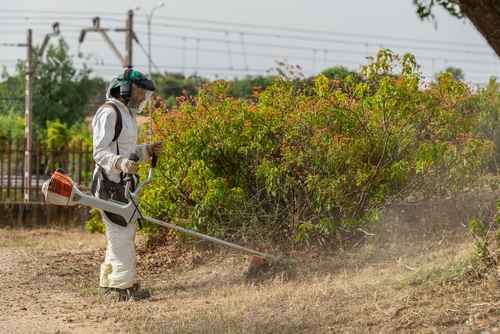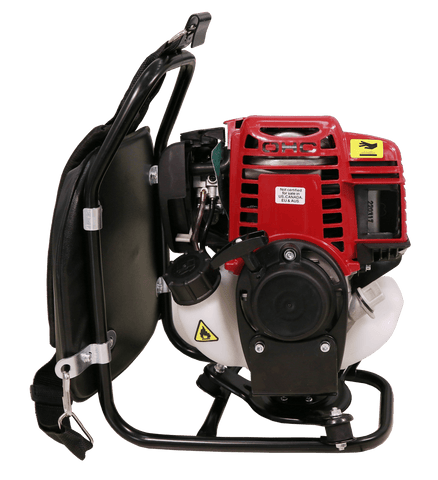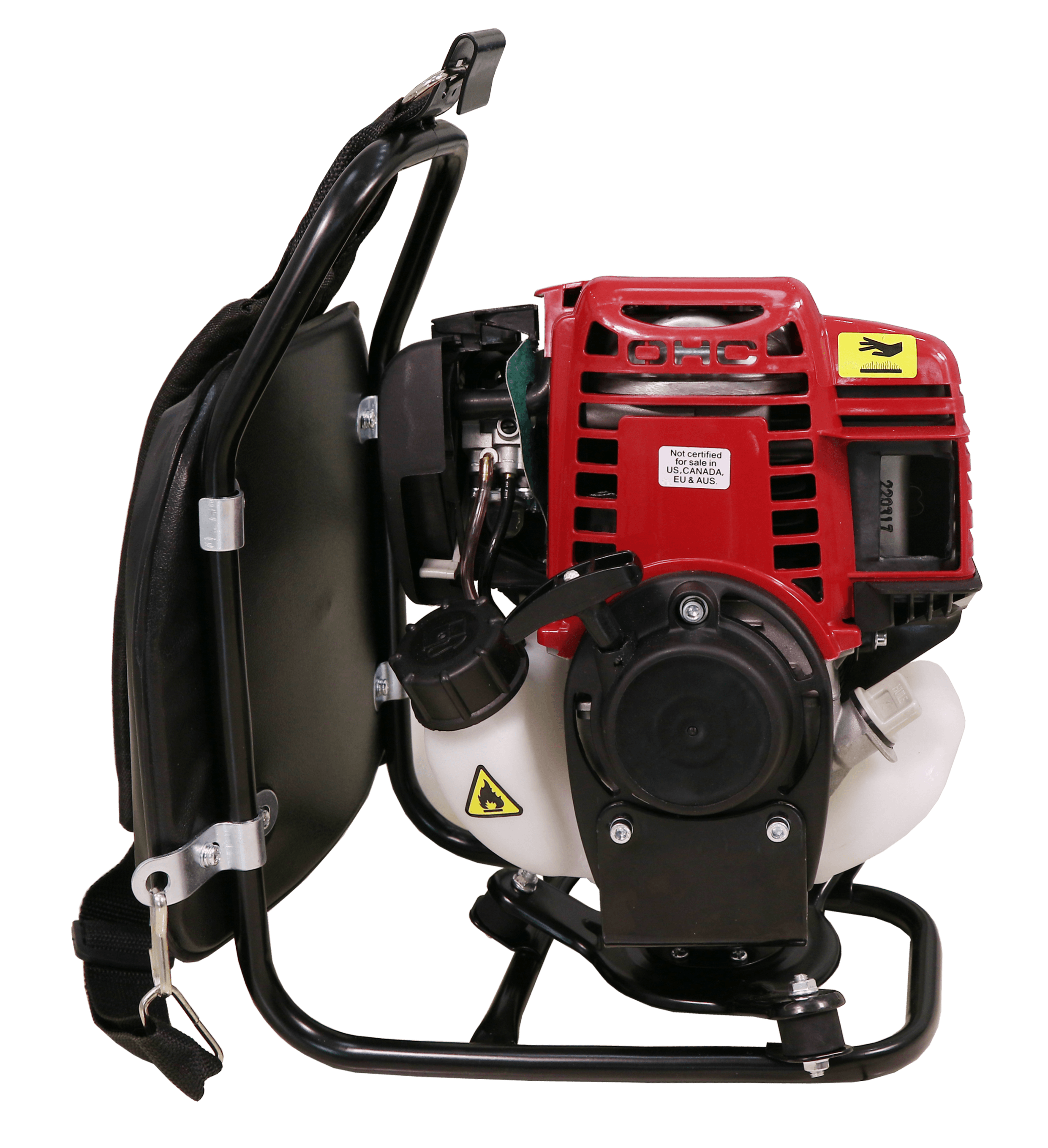As an Amazon Associate, I earn from qualifying purchases.
Clearing dense vegetation can be tough. A brush cutter makes it easier.
A brush cutter is a powerful tool designed to tackle thick grass, weeds, and small trees. Knowing how to use it properly ensures safety and efficiency. In this guide, we will walk you through the steps to use a brush cutter effectively.
Whether you are a beginner or looking to refine your skills, this guide will help you manage overgrown areas with ease. Say goodbye to unwanted vegetation and keep your yard looking neat and tidy. Let’s dive in and learn how to handle a brush cutter for the best results.

Credit: wasteremovalusa.com
Introduction To Brush Cutters
Using a brush cutter makes clearing dense vegetation easier. Start by wearing protective gear and checking the machine. Move slowly and keep the cutter close to the ground to tackle tough weeds and bushes effectively.
What Is A Brush Cutter?
A brush cutter is a tool for clearing thick plants. It cuts tall grass, weeds, and small trees. It has a strong motor. Blades are sharp and tough. It makes the job faster and easier. Good for gardens and farms.
Types Of Brush Cutters
Brush cutters come in different types. The three main types are:
- Handheld Brush Cutters: Easy to carry. Good for small areas.
- Walk-Behind Brush Cutters: Like a lawnmower. Ideal for larger areas.
- Tow-Behind Brush Cutters: Attached to tractors. Best for very large fields.

Credit: wasteremovalusa.com
Choosing The Right Brush Cutter
Selecting a brush cutter depends on a few factors. Type of vegetation is key. For thick brush, a heavy-duty model is best. Engine power matters too. More power means easier cutting. Weight affects usage. A lighter model is easier to handle. Handle design is also important. Comfortable grips reduce strain. Blade type should match your needs. Some blades are for grass, others for wood. Safety features are a must. Look for models with guards and shields.
Many brands offer good brush cutters. Husqvarna is a popular choice. Their models are strong and durable. Stihl is another trusted brand. Known for their reliable engines. Echo offers lightweight and powerful options. Makita is good for professional use. They have many high-quality models. Ryobi is budget-friendly and effective. Black+Decker is great for small tasks. Each brand has various models. Choose the one that fits your needs.
Safety Precautions
Always wear protective gear. This includes gloves, goggles, and ear protection. A helmet can protect your head. Wear boots with good grip. Long sleeves and pants shield your skin. Gear keeps you safe from debris.
Hold the brush cutter with both hands. Keep a firm grip. Stand with feet apart for balance. Clear the area of obstacles. Check for people and pets nearby. Never use the cutter when tired. Take breaks to avoid fatigue. Always follow the manufacturer’s instructions.
Preparing The Area
Start by removing any large debris, such as branches or rocks. Ensure the area is clear for safe brush cutting.
Assessing The Vegetation
First, look at the area. Check how dense the vegetation is. Note if there are any thick bushes or small trees. This will help you plan your work. Different plants need different tools. Make sure your brush cutter is strong enough. Some plants are tougher than others.
Clearing Obstacles
Remove any large rocks or sticks. These can damage your brush cutter. Clear away any loose items. This will make the job safer. Look for hidden objects. These could be dangerous. Make sure the area is safe to work in. Safety first.
Operating The Brush Cutter
First, place the brush cutter on a flat surface. Check the fuel level and add fuel if needed. Ensure the blade is secure and in good condition. Next, switch on the ignition. Pull the starter cord gently until you feel resistance. Then, pull it quickly to start the engine. Allow the machine to warm up for a few minutes before use.
Always hold the brush cutter with both hands. Use a steady, sweeping motion to cut the vegetation. Cut taller plants from top to bottom. Move slowly to avoid damaging the blade. For thick vegetation, make several passes. Keep an eye on the blade and clear it of debris often. Always wear protective gear, such as gloves and safety goggles.
Maintenance Tips
Always keep your brush cutter clean. Dirt and debris can damage the tool. After each use, wipe it down with a damp cloth. Pay special attention to the blades. Remove any stuck grass or leaves. A clean brush cutter works better and lasts longer.
Check the brush cutter regularly. Look for any loose parts. Tighten any screws or bolts that are loose. Check the fuel and oil levels. Replace the air filter if it is dirty. Regular checks keep the tool running smoothly.
Troubleshooting Common Issues
The engine may not start due to a dirty spark plug. Clean or replace it. Fuel issues can also cause problems. Ensure the fuel is fresh and the tank is full. Check the air filter. A clogged filter can stop the engine. Clean or replace it as needed. Inspect the fuel lines for cracks or leaks. Replace damaged lines to avoid further issues.
The cutting blade may become dull or damaged. Sharpen or replace the blade if it is not cutting well. Check for obstructions. Remove any debris tangled in the blade. Ensure the blade is tightly secured. Loose blades can be dangerous. Inspect the blade guard. A damaged guard can cause safety hazards. Replace it if necessary.
Expert Tips For Efficient Clearing
Break the area into small sections. This makes the task easier. Focus on one section at a time. This helps you stay organized. It also helps avoid missing spots. Make sure to clear each section fully before moving on. This method saves time and effort.
Hold the brush cutter at a slight angle. This improves cutting efficiency. Aim for a 30 to 45-degree angle. It helps cut through dense vegetation faster. Keep the blade sharp for better results. A sharp blade cuts cleaner and quicker. Always be mindful of your cutting angle.
Environmental Considerations
Proper disposal of cut vegetation is important. Pile branches and leaves in a compost bin. This helps recycle nutrients back into the soil. Burning the vegetation might harm the air quality. It’s better to avoid burning.
Use the brush cutter efficiently to reduce fuel usage. Less fuel means less pollution. Choose times when wildlife activity is low. This keeps animals safe.

Credit: machinepoint.in
Frequently Asked Questions
What Is A Brush Cutter Used For?
A brush cutter is used for clearing dense vegetation, tall grass, and small trees.
How Do You Start A Brush Cutter?
To start a brush cutter, ensure the fuel tank is full, engage the choke, and pull the starter cord.
What Safety Gear Do You Need For Brush Cutting?
Wear gloves, safety goggles, sturdy boots, and ear protection to stay safe while using a brush cutter.
How Do You Maintain A Brush Cutter?
Regularly clean the air filter, sharpen the blades, and check the fuel lines for leaks or damage.
Can A Brush Cutter Cut Small Trees?
Yes, a brush cutter can cut small trees, but ensure the blade is suitable for thicker vegetation.
Conclusion
Clearing dense vegetation becomes easier with a brush cutter. Follow the safety guidelines. Always wear protective gear. Check the equipment before use. Learn the proper techniques. Start with small areas. Move steadily and avoid rushing. Keep the blade sharp. Maintain the tool regularly.
This ensures longer life and efficiency. Brush cutters save time and effort. They make landscaping tasks manageable. Practice and patience lead to better results. Happy cutting!

